Japandi interior design is a style that has garnered attention from interior designers and enthusiasts alike. It is a fusion of Japanese and Scandinavian design elements that creates a unique aesthetic that is both minimalistic and warm. The style is characterised by its emphasis on natural materials, neutral colours, and a sense of tranquillity.

The essence of Japandi interior design is to create a harmonious balance between function and form. The style is rooted in the principles of wabi-sabi, which emphasises the beauty of imperfection and simplicity. The Scandinavian influence brings a sense of hygge, which is all about creating a cosy and comfortable atmosphere. The combination of these two design philosophies creates a style that is both practical and aesthetically pleasing.
Key Takeaways
- Japandi interior design is a fusion of Japanese and Scandinavian design elements that creates a unique aesthetic that is both minimalistic and warm.
- The style is characterised by its emphasis on natural materials, neutral colours, and a sense of tranquillity.
- Japandi interior design combines the principles of wabi-sabi and hygge to create a style that is both practical and aesthetically pleasing.
The Essence of Japandi
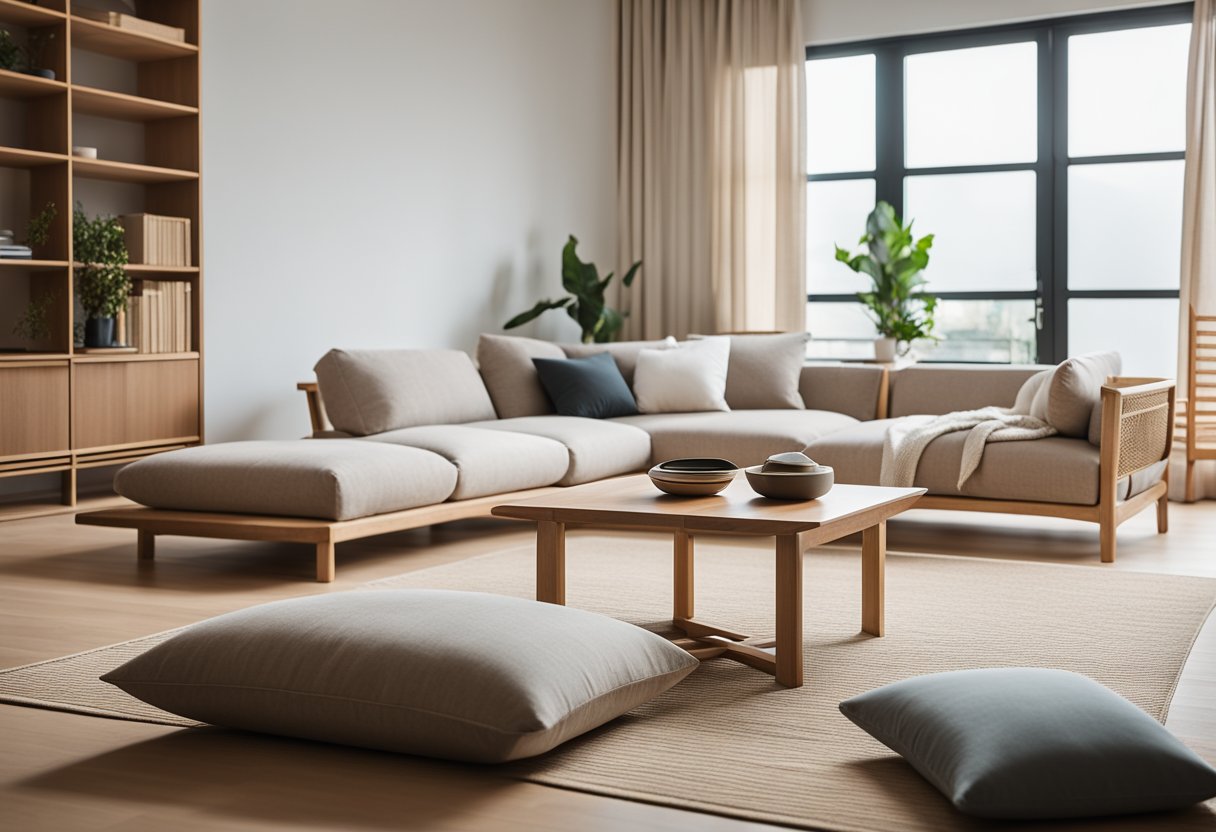
Japandi interior design is a fusion of Japanese and Scandinavian design philosophies. It’s a style that celebrates simplicity, minimalism, and functionality while embracing the warmth, natural materials, and craftsmanship of Japanese design. In this section, we’ll explore the essence of Japandi and what makes it such a captivating trend.
Defining Japandi
Japandi is a term coined to describe the blend of Japanese and Scandinavian design principles. It’s a style that emphasises simplicity, minimalism, and functionality, while also celebrating the beauty of natural materials. Japandi design is characterised by clean lines, muted colours, and a focus on natural textures such as wood, stone, and linen.
The Harmony Between Japan and Scandinavia
Japandi design is a perfect example of how two seemingly disparate cultures can come together to create something beautiful. The Japanese aesthetic is based on the concept of wabi-sabi, which celebrates imperfection and the beauty of natural materials. In contrast, Scandinavian design is known for its clean lines, minimalism, and functionality. Japandi design takes the best of both worlds and combines them to create a style that is both elegant and functional.
Principles of Japandi Design
At the heart of Japandi design are principles of simplicity, functionality, and balance. Japandi design embraces the beauty of natural materials and celebrates imperfection. It’s a style that values quality over quantity and encourages a clutter-free environment. Japandi design is all about creating a sense of harmony and balance in your home, and it can help you achieve a sense of calm and tranquillity in your daily life.
In summary, Japandi interior design is a captivating trend that celebrates the beauty of simplicity, natural materials, and functionality. It’s a style that brings together the best of Japanese and Scandinavian design principles to create a harmonious and balanced environment. If you’re looking to create a calming and tranquil space in your home, then Japandi design may be the perfect choice for you.
Design Elements
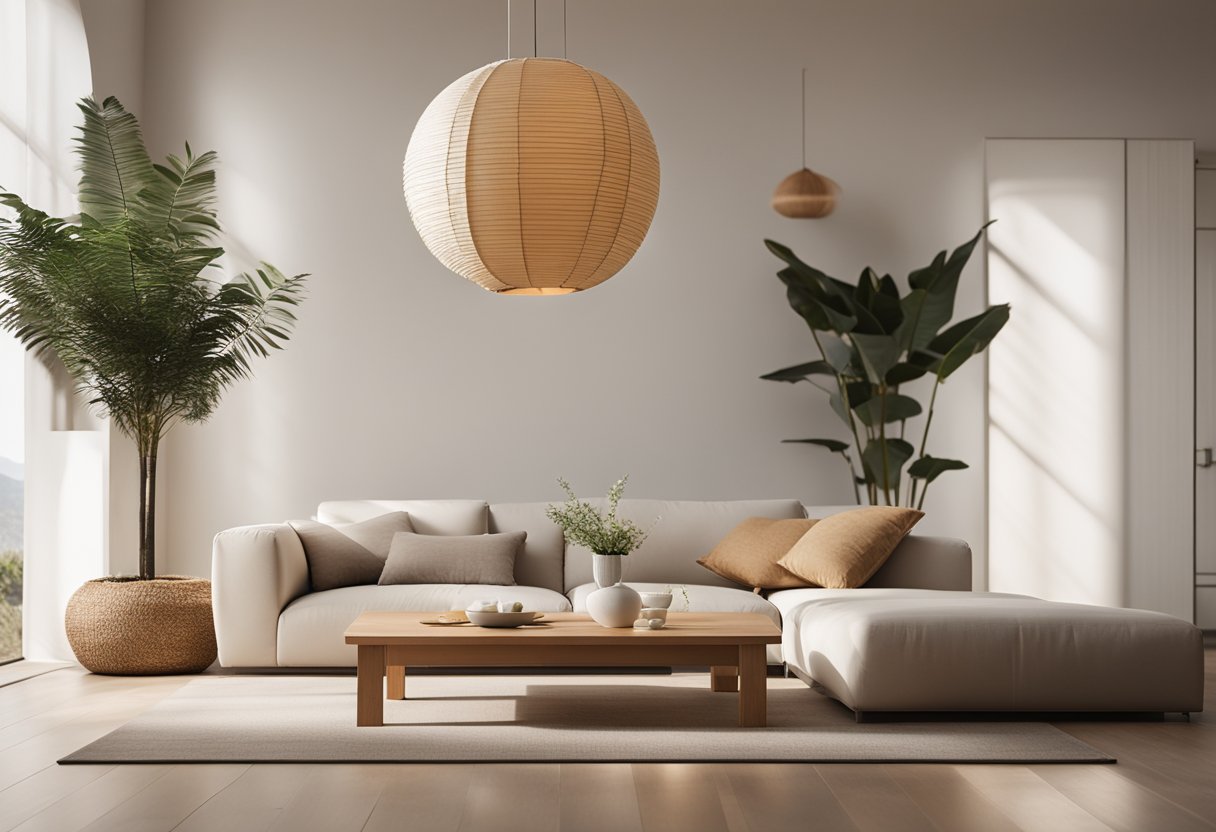
Japandi interior design is characterised by a harmonious blend of Japanese minimalism and Scandinavian design principles, resulting in spaces that are both serene and inviting. Here are some of the key design elements that form the foundation of Japandi style.
Natural Materials and Textures
In Japandi interior design, the use of natural materials is a key element. You can incorporate natural materials such as wood, bamboo, stone, and linen to add warmth and texture to your space. These materials add a sense of calm and tranquility to your home, making it feel more organic and authentic.
Neutral Colour Palette
Japandi interior design makes use of a neutral colour palette, which includes shades of white, beige, grey, and black. These colours help to create a calming and relaxing atmosphere in your space. You can also add pops of colour with natural accents such as greenery, flowers, and other organic elements.
Clean Lines and Form
Clean lines and form are essential to Japandi interior design. This design style favours simplicity, and items in a space are intentional and serve a functional purpose. The lack of clutter encourages open space and clean lines that are either straight or curved. You can achieve this by using furniture that is simple in design and has clean lines.
Incorporating Natural Light
Natural light is an important element in Japandi interior design. It helps to create a sense of openness and airiness in your space. You can maximise natural light by using sheer curtains or blinds that let in plenty of light. You can also use mirrors to reflect natural light and create the illusion of a larger space.
Incorporating these design elements into your home can help you achieve a Japandi interior design that is both calming and inviting. By using natural materials, a neutral colour palette, clean lines, and natural light, you can create a space that is both functional and beautiful.
Creating the Japandi Aesthetic
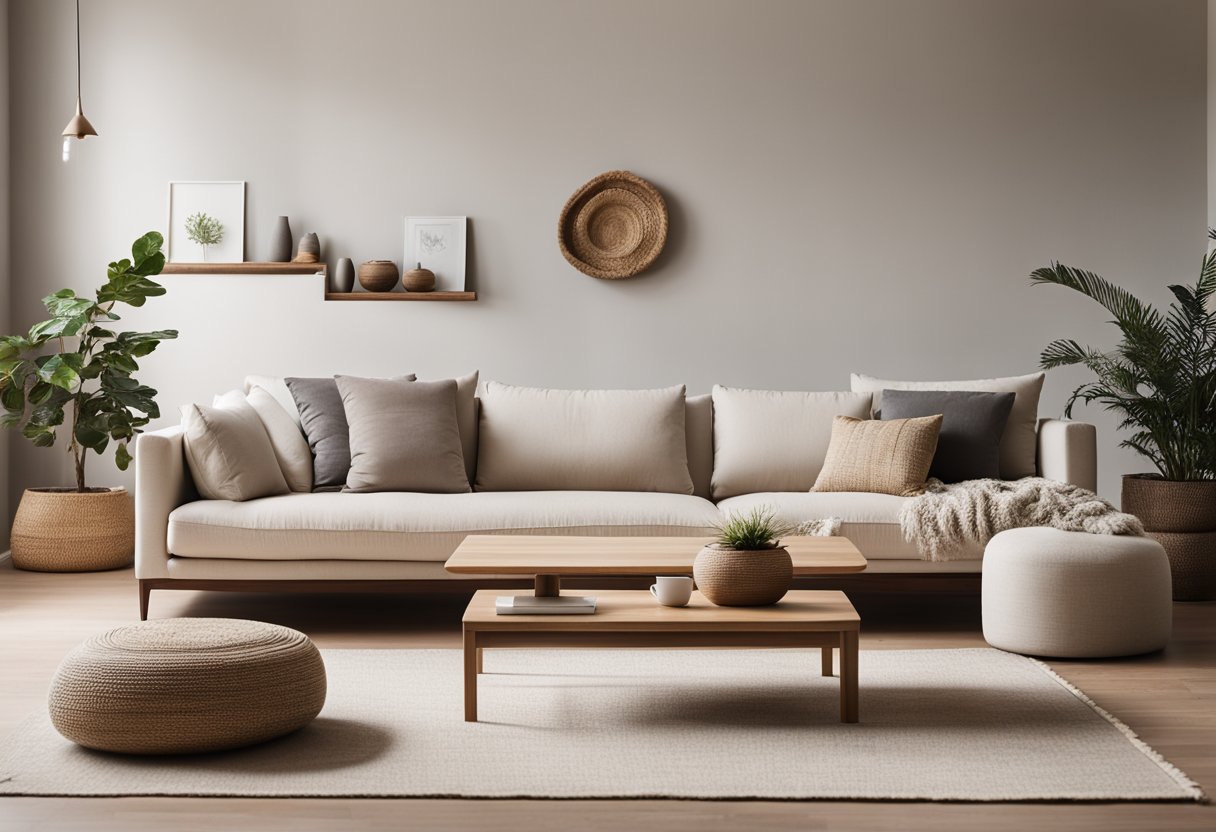
If you’re looking to create a Japandi interior design, there are a few key elements to keep in mind. This style is a harmonious blend of Japanese minimalism and Scandinavian functionality, resulting in a unique and tranquil aesthetic. Here are some tips to help you achieve the Japandi look in your home.
Furniture and Decor
When it comes to furniture and decor in Japandi style, less is more. Stick to simple, clean lines and natural materials like wood, bamboo, and linen. Look for pieces that are both functional and beautiful, such as a low-profile sofa with clean lines and a minimalist coffee table. You can also incorporate handmade items, like a ceramic vase or a woven rug, to add texture and warmth to your space.
Focus on Functionality
One of the hallmarks of Japandi style is a focus on functionality. Every item in your space should serve a purpose, and there should be no clutter or unnecessary items. This means choosing furniture that is both beautiful and practical, like a storage bench that doubles as seating or a side table with built-in storage. You can also use clever storage solutions, like wall-mounted shelves or under-bed storage, to keep your space organized and clutter-free.
Influence of Wabi-Sabi
Another key element of Japandi style is the influence of Wabi-Sabi, a Japanese philosophy that celebrates imperfection and impermanence. This means embracing natural materials that show wear and tear over time, like a wooden dining table with visible knots and grain. You can also incorporate handmade items that have a unique, one-of-a-kind feel, like a hand-thrown ceramic mug or a woven basket.
Sustainability and Eco-Friendliness
Finally, Japandi style is all about sustainability and eco-friendliness. Look for furniture and decor made from sustainable materials like bamboo or recycled wood, and choose items that are built to last. You can also incorporate natural elements like plants and flowers to bring a sense of life and vitality to your space.
Overall, creating a Japandi interior design is all about finding a balance between simplicity, functionality, and beauty. By choosing furniture and decor that is both practical and stylish, embracing imperfection and natural materials, and prioritizing sustainability and eco-friendliness, you can create a space that is both calming and inspiring.
Cultivating Atmosphere
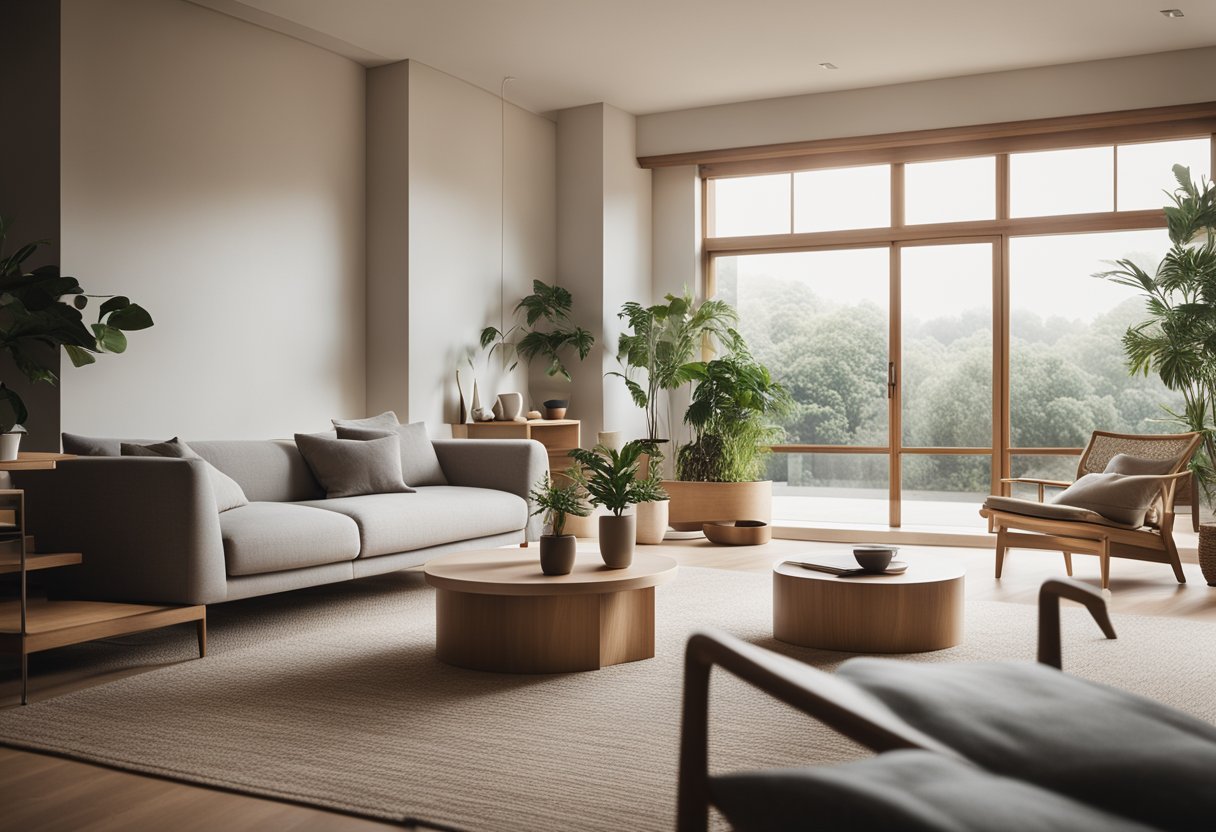
Creating the right atmosphere is key to achieving the Japandi interior design style. You want to create a space that is calm, serene, and tranquil. Here are some tips on how to cultivate the right atmosphere for your Japandi interior design.
Embracing Calm and Serenity
To create a serene atmosphere, you want to use neutral colours, such as beige, grey, and white. These colours are calming and create a sense of tranquillity. You can also add some muted tones, such as sage green, to add a touch of nature to your space.
Another way to create a calming atmosphere is to use natural materials, such as wood, bamboo, and rattan. These materials bring a sense of warmth and comfort to your space. You can use them for furniture, flooring, and even wall decor.
Decluttering for Tranquility
Clutter can create a sense of chaos and stress in your space. To achieve the Japandi interior design style, you want to declutter your space and keep it minimal. This means getting rid of unnecessary items and only keeping the essentials.
You can use storage solutions, such as baskets and boxes, to keep your space organised and tidy. This will help create a sense of tranquillity and calmness in your space.
Incorporating Plants and Nature
Nature plays a significant role in the Japandi interior design style. You want to incorporate natural elements, such as plants and flowers, into your space. This will help create a sense of harmony and balance.
You can use plants in different ways, such as hanging them from the ceiling, placing them on shelves, or using them as a centerpiece. You can also use natural materials, such as stone and pebbles, to add texture and depth to your space.
By embracing calm and serenity, decluttering for tranquility, and incorporating plants and nature, you can cultivate the perfect atmosphere for your Japandi interior design.
Practical Application
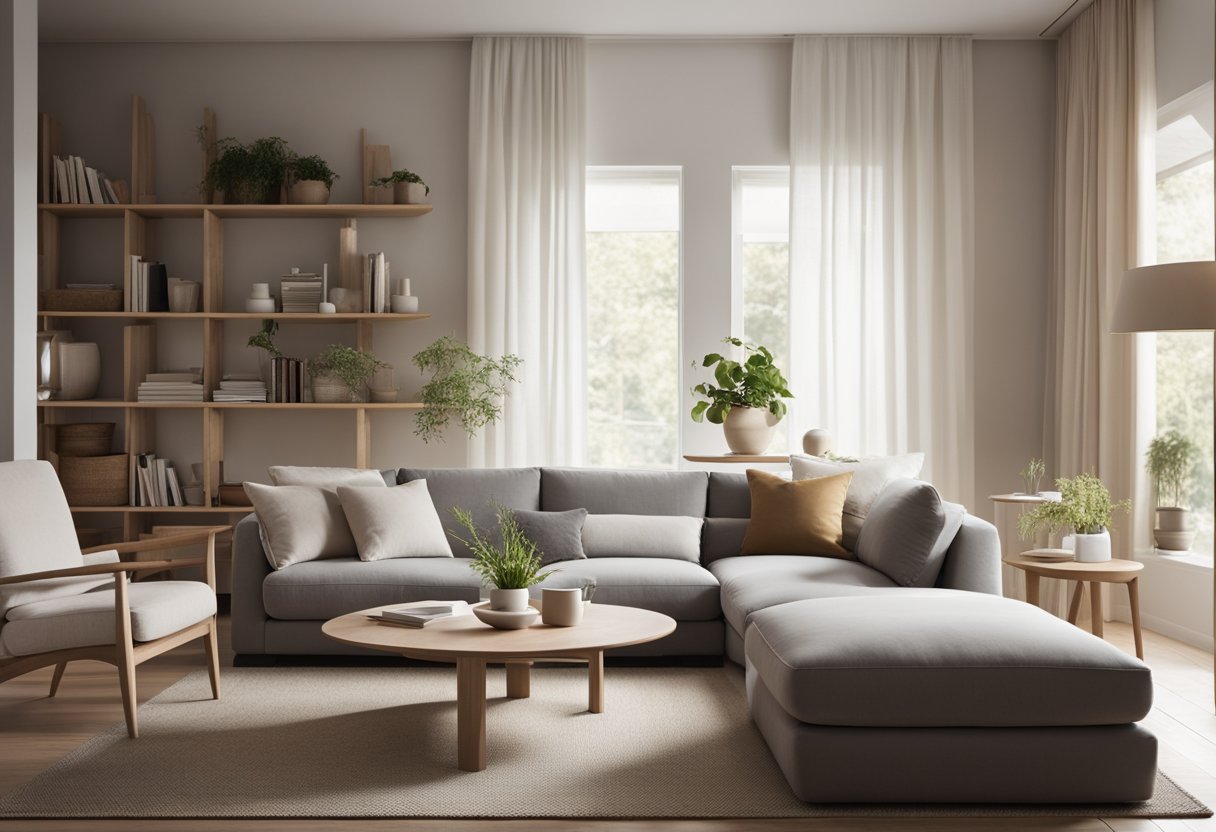
So you’re ready to embrace the Japandi style and bring it into your home. Here are some practical application tips to help you achieve the perfect balance between functionality and aesthetics.
Storage Solutions
One of the key principles of Japandi style is minimalism, which means keeping clutter to a minimum. To achieve this, storage solutions are essential. Look for furniture pieces that offer hidden storage, such as a bed with built-in drawers or a coffee table with a lift-up top. You can also incorporate open shelving to display your favourite items while keeping them organized.
Focused and Functional Interiors
Japandi style is all about functionality, so it’s important to keep that in mind when designing your space. Focus on creating a layout that flows well and makes sense for your lifestyle. Choose furniture that serves a purpose and is comfortable, such as a low-profile sofa or a simple dining table. Keep the colour palette neutral and add pops of colour with soft furnishings and accessories.
Lighting and Accessories
Lighting is an important aspect of Japandi style. Look for natural light sources such as large windows or skylights to bring in as much natural light as possible. You can also incorporate artificial lighting with minimalistic lamps or pendant lights. Accessories should be kept to a minimum, but can still add personality to your space. Look for items made from natural materials such as wood or ceramic, and add texture with soft furnishings like cushions and throws.
By following these practical application tips, you can create a Japandi-inspired space that is both functional and beautiful. Remember to keep things simple and minimalistic, and focus on creating a space that works for your lifestyle.
Cultural Integration

Japandi interior design is a unique blend of Scandinavian and Japanese design styles, resulting in a harmonious and minimalist aesthetic that is growing in popularity. The fusion of these two styles creates a new design language that is both functional and beautiful. In this section, we will explore the cultural integration of Japandi interior design and how it brings together the best of both worlds.
East-Meets-West Design
Japandi interior design is a perfect example of how the East meets the West. The design style combines the simplicity and functionality of Scandinavian design with the elegance and beauty of Japanese design. This fusion creates a design language that is minimalistic and functional, yet warm and inviting. The East-meets-West design of Japandi is characterised by clean lines, neutral colours, and natural materials.
Scandinavian Hygge and Japanese Zen
Scandinavian hygge and Japanese zen are two concepts that are central to Japandi interior design. Hygge is a Danish concept that refers to creating a warm and inviting atmosphere, while zen is a Japanese concept that refers to finding inner peace. Japandi interior design combines these two concepts to create a space that is both cosy and peaceful. The use of natural materials such as wood and stone, along with soft textures and warm lighting, creates a space that is comfortable and inviting.
Craftsmanship and Heritage
Craftsmanship and heritage are also important aspects of Japandi interior design. Both Scandinavian and Japanese design are known for their emphasis on craftsmanship and attention to detail. Japandi interior design takes this one step further by incorporating heritage and tradition into the design. The use of traditional materials such as wood and paper, along with traditional techniques such as joinery and weaving, creates a space that is not only beautiful but also meaningful.
In conclusion, Japandi interior design is a unique and exciting fusion of Scandinavian and Japanese design. The cultural integration of these two styles creates a new design language that is both functional and beautiful. The East-meets-West design, the combination of hygge and zen, and the emphasis on craftsmanship and heritage all contribute to the unique and inviting atmosphere of Japandi interior design.
Case Studies and Inspirations
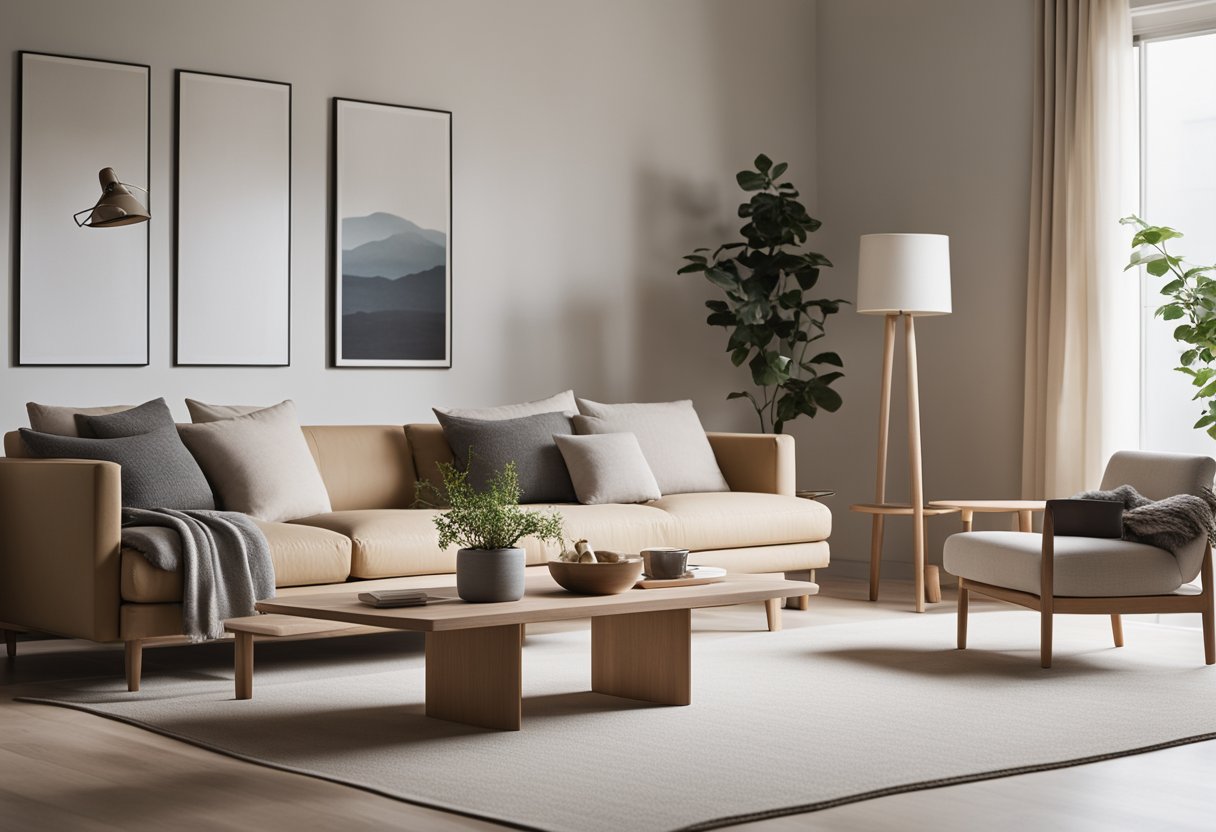
If you’re looking for inspiration for your Japandi interior design, there are a few case studies you can look at. Here are a few examples:
Norm Architects and Karimoku Case Study
Norm Architects and Karimoku collaborated to create a beautiful Japandi interior design. They used natural materials, such as wood and stone, to create a warm and inviting space. The furniture was designed with clean lines and minimalistic shapes, which is a key feature of Japandi design. The space was also decorated with plants, which added a touch of nature to the interior. If you want to create a Japandi interior design, this is a great case study to look at.
Ariake and Daytrip Studio
Ariake and Daytrip Studio are two companies that have collaborated to create a range of Japandi furniture. They have created a range of furniture that is both functional and beautiful. The furniture is made from natural materials, such as wood and leather, and has a minimalistic design. The furniture is also designed to be versatile, so it can be used in a range of different spaces. If you’re looking for Japandi furniture, this is a great place to start.
Powerscroft Road: A Quiet Reflection
Powerscroft Road is a beautiful Japandi interior design that was created by Studio 30. The space is designed to be a quiet reflection of the natural world. The furniture is made from natural materials, such as wood and stone, and has a minimalistic design. The space is also decorated with plants and other natural elements, which adds to the overall aesthetic. If you want to create a peaceful and calming space, this is a great case study to look at.
These case studies are just a few examples of the many Japandi interior designs that are out there. If you’re looking for inspiration for your own Japandi interior design, these are great places to start.
Global Influence
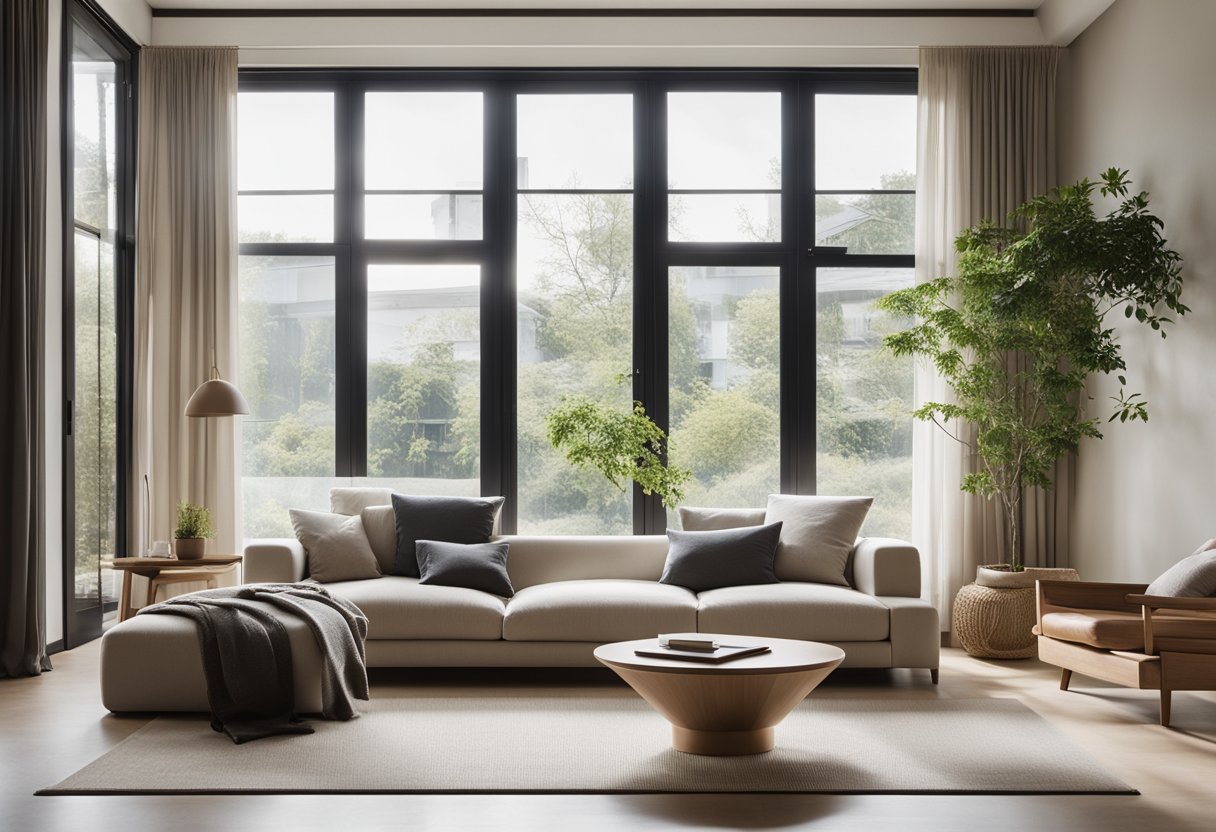
Japandi interior design has gained popularity not only in Japan and Scandinavia but also across the world. This design trend has been adapted in different climates, and it has become a global phenomenon.
Japandi Across the World
London is one of the cities that has embraced Japandi interior design. During the London Design Festival, Japandi-inspired designs were showcased. The designs featured a blend of Japanese simplicity and Scandinavian functionality. The designs were well received, and people were excited to incorporate Japandi in their homes.
Stockholm Design Week and Copenhagen have also been at the forefront of Japandi interior design. Both events have showcased Japandi-inspired designs, which have been well received. The designs feature a mix of Japanese minimalism and Scandinavian functionality.
Adapting Japandi in Different Climates
Japandi interior design has been adapted to suit different climates. In Singapore, for example, Japandi has been blended with tropical elements to create a unique design style. The design style features a mix of natural materials such as wood and rattan, and it incorporates greenery to create a tropical feel.
In colder climates, Japandi has been adapted to incorporate warm and cosy elements. Wool and fur are used to create a warm and inviting atmosphere. The use of soft lighting also adds to the cosy feel of Japandi interior design.
Overall, Japandi interior design has become a global phenomenon, and it has been adapted to suit different climates. Whether you live in a warm or cold climate, you can incorporate Japandi in your home and create a unique and inviting space.
Frequently Asked Questions
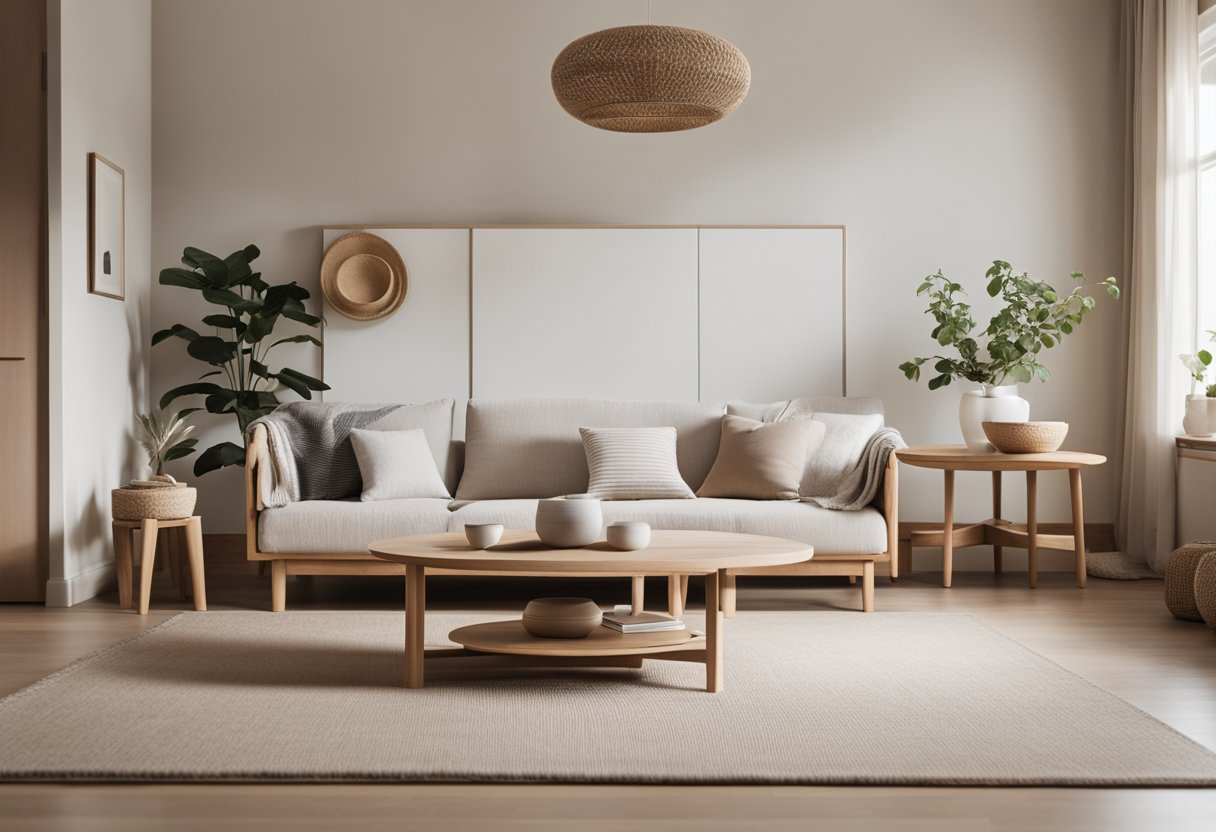
How can I incorporate Japandi design elements into my living room for a harmonious space?
To incorporate Japandi design elements into your living room, start by decluttering and simplifying the space. Japandi design is known for its minimalism, so focus on incorporating natural materials, such as wood and stone, and neutral colours. Add in some greenery with plants, and use textiles with a tactile quality, such as linen and wool. Keep furniture simple and functional, with clean lines and a focus on comfort.
What distinctive characteristics define the essence of Japandi interior styling?
Japandi design is a fusion of Japanese and Scandinavian styles, which emphasises minimalism, functionality, and natural materials. It is characterised by a focus on simplicity, with clean lines and uncluttered spaces. Japandi design also incorporates a sense of warmth and cosiness, with a focus on natural textures and materials.
Where might one find inspiration for Japandi interior design on Pinterest?
Pinterest is a great source of inspiration for Japandi interior design. Look for boards and pins that focus on minimalism, natural materials, and neutral colours. Some popular search terms include “Japandi interior design,” “Scandinavian design,” and “Japanese design.”
What are the key considerations for integrating Japandi design in kitchen spaces?
When integrating Japandi design in kitchen spaces, focus on functionality and simplicity. Use natural materials, such as wood and stone, and incorporate plenty of storage to keep the space uncluttered. Keep the colour palette neutral, with a focus on warm, earthy tones. Choose simple, functional appliances and accessories, and incorporate greenery with potted herbs.
Could you suggest ways to adapt the Japandi aesthetic to HDB flats?
To adapt the Japandi aesthetic to HDB flats, focus on decluttering and simplifying the space. Use natural materials, such as wood and stone, and incorporate greenery with potted plants. Keep the colour palette neutral, with a focus on warm, earthy tones. Choose furniture and accessories that are simple and functional, with clean lines and a focus on comfort.
In what ways does Japandi interior design differ from traditional Japanese style?
Japandi interior design differs from traditional Japanese style in that it incorporates Scandinavian design elements, such as minimalism and functionality. While traditional Japanese style is characterised by a focus on simplicity and natural materials, Japandi design also incorporates a sense of warmth and cosiness, with a focus on natural textures and materials.


